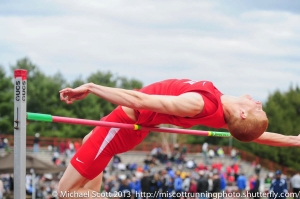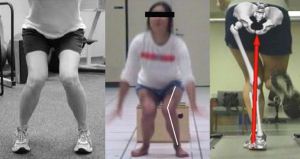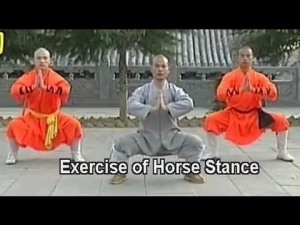This blog is everything I wished I knew as a high school and college athlete.
Sustainable athletics is health and fitness for life. This blog is designed to help you understand the key components of health, with particular emphasis on helping you live a competitive, happy, active lifestyle in the present, while planting seeds to help you to continue to enjoy that lifestyle in the future. In order to make serious improvements as an athlete and as a human being, you need time. You must learn be sustainable, to allow yourself to be able to put the work in necessary to improve.
How I got here:
In 2005, the track & field coach at my school saw potential in this tall, lanky, scrawny freshman sitting on the end of the bench on the school’s basketball team. What followed was an absolute love affair with the jumping events – I gave up parties, desserts, and trained my butt off for years, and the work paid off – I came in second at states in Massachusetts and competed for both the University of Maryland and Boston University track & field teams, earning all-conference honors at the latter. I went from being barely able to grab the rim and hang on my freshman year in high school, to being able to hit my head on it 8 years later.

However, all of that progress came with a price – I missed more than half of the competitions that my teams competed in due to injury. As much as I hated it, it became my story: a ton of potential, but never fulfilled. From 2006 to 2014, I was cleared to run in the month of December only one of those years. Combined year and a half in a boot, blah blah blah…don’t want to ask for sympathy, plenty had it a lot worse. However, my injuries were pretty consistently stress fractures – 2 in high school, 8 in college. I looked everywhere for info, usually in the wrong places, but I occasionally found something, and later found myself able to better separate solid information from flaky, non-evidence-based information (for example: the nutritionist that told me that I should “snack more” to deal with my injuries, while not checking in on trace mineral levels). I also work with athletes every day, and have come up with a lot of quality information about health and athletics. That’s what I plan on sharing with this blog.
You might notice that a lot of the information here is focused on nutrition, and practical ideas for preparing, cooking and enjoying food. While training is of the utmost importance, and this blog will get to it in time, I’d say that there is already a lot of information out there, from physical therapists, coaches, and others. I have read numerous books on coaching and training athletes where there is 0 mention of what we put into our bodies. This is absurd.

TRAINING MEANS NOTHING IF YOU DON’T RECOVER FROM IT.
No one hits a personal best after a hard workout. It is the adaptation that takes place as you recover that is most important. If you do not eat, you will not recover. Likewise, if you eat crappy foods, or crappy combinations of foods, you will recover in a crappy manner. This is often overlooked. Some still believe that calories-in, calories-out, is relevant. It isn’t. Some still believe that the argument is about carbohydrates vs. protein vs. fat, their ratio etc. This is important…but the quality of the food that you eat matters more. Different ratios work for different individuals, and if we are talking athletics (which we are) then it depends on the sport. Anecdotally, I crave and perform better off of a diet with an emphasis on protein when I am lifting and training for speed and power, while I thrive off of grains and carbohydrates while I am either not training or doing more aerobic work. These things matter. I have noticed that this sort of information (while there are many different opinions and some contradicting views) is out there.
However, the most important thing is removing foods that are toxic to your body, or empty of nutritional value, and replacing them with nutritionally power-packed foods. You can only consume so much food in a day, so if performance is your goal, you must get as many vitamins, minerals and energy out of the food that you do consume. I look at someone eating pasta as a meal, with no vegetables or meat – it’s a waste of digestive fluids and actually toxic, if you compare it to something such as toasted buckwheat, which because it has not had the nutritious bran and germ removed from its seed, is power-packed with minerals, does not spike blood sugar levels, and actually does other helpful things as well, such as stabilizing mood (to be discussed further down the line). The way I think of it is this: Eating the white pasta is like driving three hours out of your way to a 7-11 when you need groceries, while eating the buckwheat is like walking to the large, inexpensive yet fresh and healthy, grocery store down the street. By choosing nutritionally subpar foods, you are making it harder on yourself by driving a great distance (i.e. straining your digestive system, hormones, and other parts of your body) but really finding very little of value once you get there (after your body is strained by digesting this processed food, your body has very little to gain from the pasta except for quick, sugar energy). Additionally, you are not going to spend (much) more money, and what you spend is an investment to help you avoid orthopedic and other medical visits in the future. Your health is the best investment you can make.

So what will this blog do for me?
Practical advice on what to get rid of, what to add, and how to to that – including recipes. As someone who has worked two jobs at a time while being a full-time graduate student, my recipes are not the typical ones you’ll find on a cooking blog. They are as quick and easy as possible, there aren’t too many frills to them (I don’t have a million ingredients in my cabinet), and perhaps most importantly, they will dispel the myth that eating healthy is expensive. If need be, I can (and have) adjusted my diet to live on $5 a day in food – you can barely get a full meal at McDonald’s nowadays for that kind of money. I believe that this piece is the most important for all people, not only athletes, because that myth needs to die hard.
We see plenty of health advice focused around what to get rid of – we will tell you what to cut, for sure, but also what to replace it with. I often see individuals hear of the dangers of certain foods, avoid them like the plague for a while, then go back to them. Why? Because they left an empty hole in their place. This is why very few will keep to a low-carb diet, even though it has helped many to lose weight in the short term. We gain from cutting carbs, which in our society are usually nutritionally devoid of value, but since we do not find some form of “better” carbohydrate to replace it with, our diets are deficient, and our body knows this.
This is not a bible of information – it is intended to spark conversation and to give you new, healthier ideas about how to live your life on and off of the playing field that I find most athletes are lacking.
So, what am I aiming to live without?
Overly processed foods.
Some may be surprised to know that this includes things such as:
Soda – which you may have known aren’t the best for you, but you should know that they literally weaken bones (!!!!!!)
Commercial fruit juice
Low-fat dairy products
“Whole grain” cereals, breads, and pastas (which lose many of their minerals, vitamins and nutrients during industrial cooking processes – notice the routine addition of certain vitamins and minerals, to make up for those lost)
Anything with added sugar, which is most commercially available foods – you might not know that a Yoplait yogurt has sugar equal to many desserts – you must look at the labels of foods!!
Vegetable oils & margarines – you’d be surprised where you can find these (all processed foods, chips, cereals, and salad dressings, among other places)
Anything from a can
And most alcoholic drinks, excluding wine and “hoppy” beers
So, what do I replace these with?
Well, there are a lot of options. However, most of them require planning and preparation. You must learn to cook. You must know what is in your food, and if you don’t make it yourself you just don’t know. Many “health foods” are processed in ways that ruin their nutritional content. You’re going to have to soak grains and legumes, find fresh produce, make your own chicken stock (more on that later) and learn to prepare food in a way that the body can easily and effectively assimilate it. National Geographic ran a great piece in September of 2014 on “The Evolution of Diet,” which stated that what made humans who we are is not what we ate, but how we prepared it – we are the only species that cooks, the only species that will not survive healthily on raw food alone. This article also proves wrong the misconception that our “paleo” hunter-gatherer ancestors ate mostly meat – except for areas that were covered in snow much of the year, plant foods (starches included) have been a huge part of cuisine even before we started to grow them ourselves during the agricultural revolution. They go on to suggest, not surprisingly, that humans are actually pretty bad at hunting, so we are very used to subsisting on grains, fruits, vegetables, legumes and the like.
The nutritional content of food is important, but during cooking and digestion, that content changes. Even different combinations of food eaten in the same meal has a profound effect on the net health effect of said meal. This is why Traditional Chinese Medicine warns against eating salads in fall, winter, and spring. It’s too hard on your body to absorb that nutrition, you pay more than you benefit. Upcoming posts will shed light on both traditional and modern perspectives on food. What we eat is less important than how we eat it.
What else are we talking about on this blog?
Although food has a huge role – it’s how we get energy from the environment – there are other things (i.e. training and lifestyle) that influence how our body uses said energy to rebuild itself in a more effective way, both for general health and athletics.
We’re talking about why most plyometrics are used in a way in which they were never intended, and why they often hurt more than they help.
We’re talking about the specific impacts of training and nutrition (and sleep!) on the health of your bones.
We’re talking about why salads and uncooked leafy greens are bad for your health….unless it’s summer.
We’re talking about glycosaminoglycans (the larger group of molecules that include the popular joint health supplements glucosamine and chondroitin), why you probably aren’t getting enough of them in a modern diet, and why this is a HUGE problem for athletes.
We’re talking about the limitations of self-massage (foam rolling), and other modalities such as gua sha and instrument assisted soft tissue therapy that can speed your return from injury – but also why their necessity could signal other problems.
We’re talking about the problems with low/non-fat dairy products, and where the calcium from these products goes if you remove the fat (hint: it isn’t where you want it).
We’re talking about fascia, and its importance in training athletes.
We’re talking about organ meats, sprouted grains, chicken feet!
We’re talking about applying wisdom from traditional (chinese, ayurvedic) medicines to athletic performance.
We’re talking about the differences between the way that USA’s training differs from the Ukraine’s.
We’re talking about why food that tastes bad is probably bad for you, and vice versa – provided that you don’t add anything toxic to it.
We’re talking about mindfulness in training, and how Bruce Lee and Kobe Bryant used this to become the amazing athletes that they were.
We’re talking about why so many athletes keep getting hurt, and why the problem is currently getting worse.
And much, much more!














